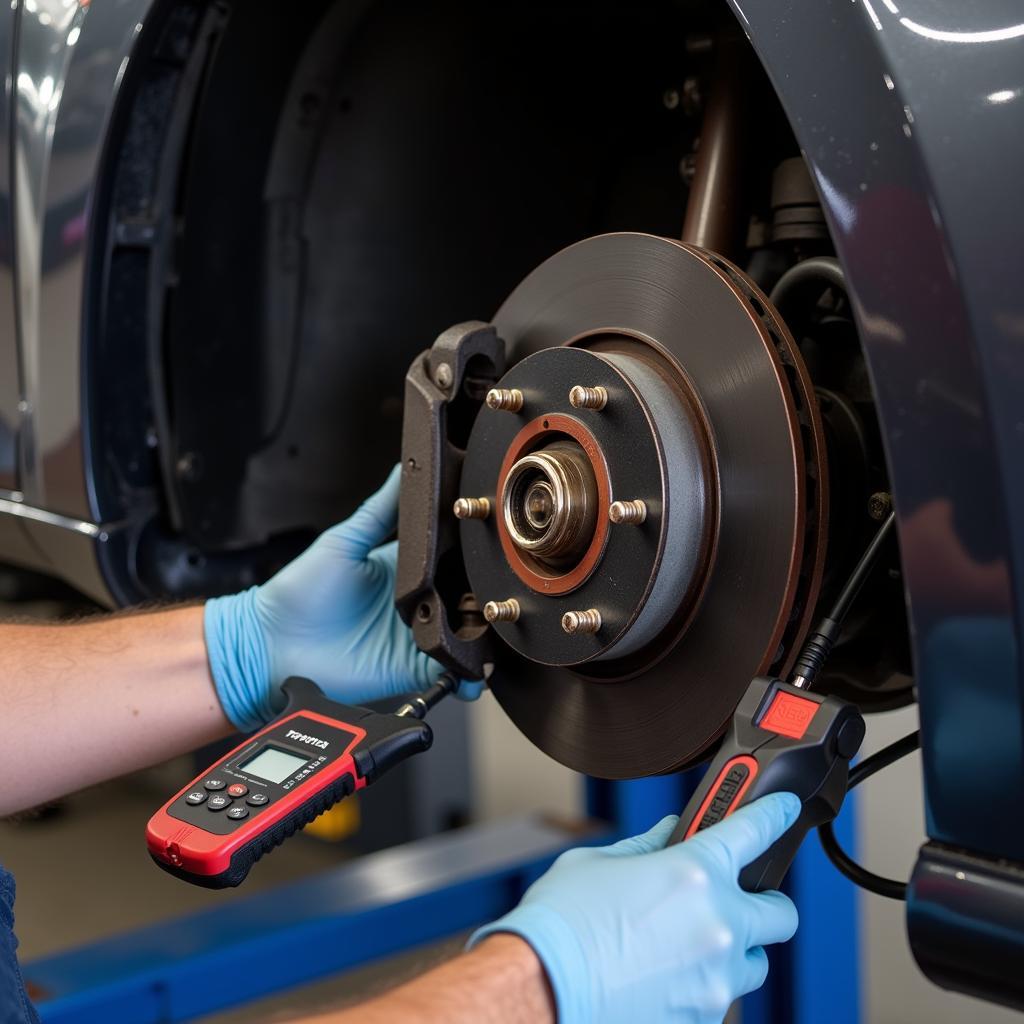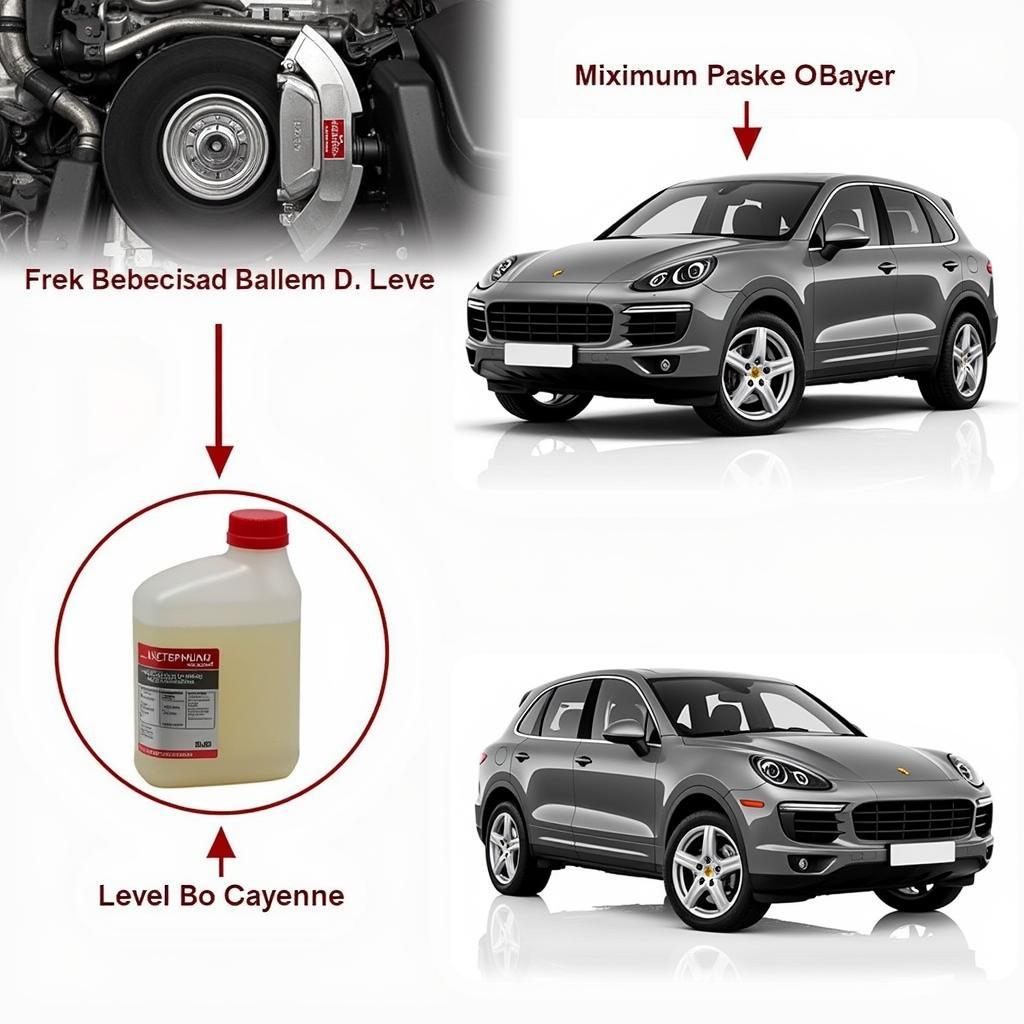The brake warning light on your Toyota is a crucial safety indicator. Ignoring it could lead to serious problems. This comprehensive guide explores the common causes of a Toyota brake warning light and provides actionable solutions, including remote diagnostic options.
If your Toyota’s brake warning light is illuminated, it signals a potential issue within your braking system. This could range from something as simple as low brake fluid to more complex problems like a malfunctioning ABS system. Addressing the problem promptly is vital for your safety and the longevity of your vehicle. Check out the reasons why your Nissan Altima’s brake light is on here: brake warning light on 2008 nissan altima.
Common Causes of a Brake Warning Light Toyota
Several factors can trigger the brake warning light in your Toyota. Understanding these causes empowers you to take appropriate action.
Low Brake Fluid
One of the most common culprits is low brake fluid. This usually indicates a leak somewhere in the system.
Worn Brake Pads
Brake pads wear down over time. When they reach a critical point, the brake warning light illuminates.
Faulty ABS System
A malfunctioning Anti-lock Braking System (ABS) can also trigger the warning light. This often requires professional diagnosis.
Parking Brake Engaged
Sometimes, the simplest explanation is the correct one. Ensure your parking brake isn’t engaged.
Brake Fluid Sensor Malfunction
The brake fluid sensor itself can sometimes fail, causing a false positive.
Troubleshooting Your Toyota Brake Warning Light
Here’s a step-by-step guide to help you troubleshoot the brake warning light:
- Check the Parking Brake: Ensure the parking brake is fully disengaged.
- Inspect Brake Fluid Level: Check the brake fluid reservoir. If it’s low, top it off and monitor for leaks.
- Examine Brake Pads: Visually inspect the brake pads for wear. If they appear thin, replacement is likely needed.
- Consult a Professional: If the problem persists, consult a qualified mechanic or utilize remote diagnostic services.
Remote Diagnostics and Software Solutions
Modern technology allows for remote diagnosis and software updates, offering convenient and efficient solutions. These services can pinpoint the issue and even fix software-related problems remotely. For similar issues on a Nissan Altima, check this out: 2008 nissan altima brake warning light.
Benefits of Remote Diagnostics
- Convenience: No need to visit a physical shop.
- Speed: Faster diagnosis and resolution.
- Cost-Effective: Potentially less expensive than traditional methods.
Why is my brake warning light flashing?
A flashing brake warning light typically signifies a more serious issue, often related to the ABS system.
Can I drive with the brake warning light on?
Driving with the brake warning light on is highly discouraged. It could indicate a serious safety hazard.
How much does it cost to fix a brake warning light issue?
The cost varies depending on the underlying cause. It could range from a few dollars for brake fluid to hundreds for more complex repairs.
“Regular brake maintenance is crucial,” says John Davis, a certified automotive technician with 20 years of experience. “Addressing the brake warning light promptly can prevent costly repairs down the road.”
Conclusion
The brake warning light in your Toyota should never be ignored. By understanding the potential causes and utilizing appropriate troubleshooting methods, including remote diagnostics, you can ensure your safety and maintain your vehicle’s braking system in optimal condition. Addressing the brake warning light promptly ensures safe and reliable driving. “Don’t wait until it’s too late,” adds Davis. “A small problem can quickly escalate into a major one.”
 Toyota Brake System Inspection
Toyota Brake System Inspection
FAQ
-
What does a solid brake warning light mean? A solid light typically indicates low brake fluid or worn brake pads.
-
What does a flashing brake warning light mean? A flashing light often suggests a problem with the ABS system.
-
Can I check my brake fluid myself? Yes, locate the brake fluid reservoir and check the level.
-
How often should I replace my brake pads? It depends on driving habits, but generally every 30,000 to 70,000 miles.
-
Is remote diagnostics reliable? Yes, it can effectively pinpoint many brake system issues.
-
What should I do if my brake warning light comes on while driving? Pull over safely and assess the situation. If unsure, call a tow truck.
-
How can I prevent brake warning light issues? Regular brake maintenance, including fluid checks and pad inspections, is key.

